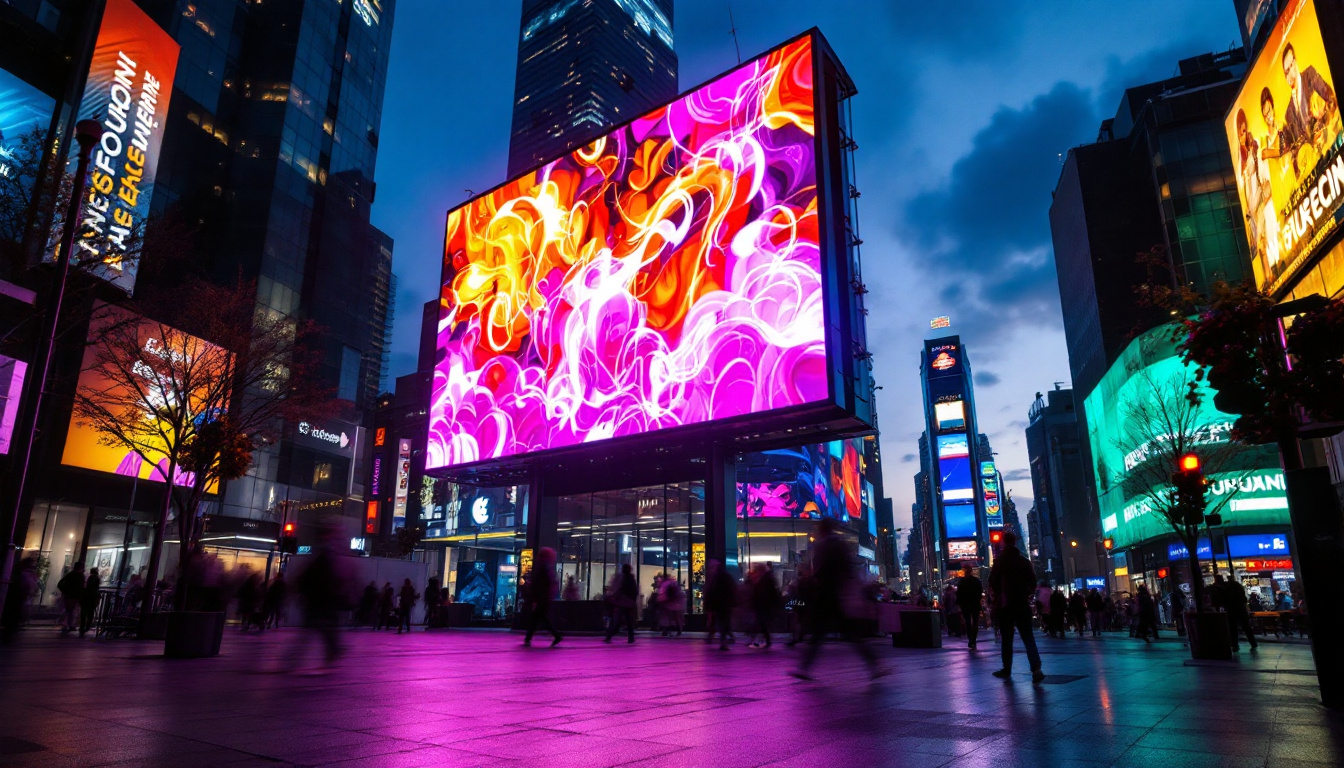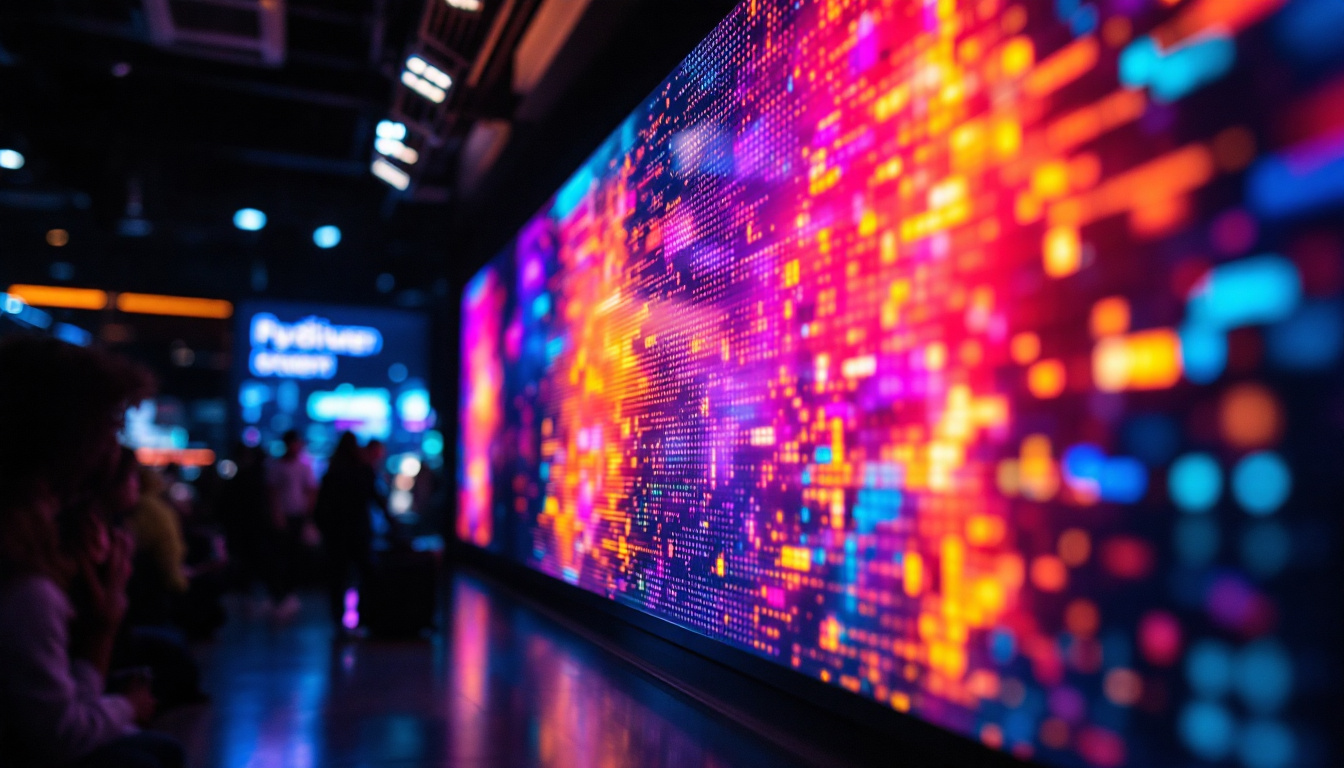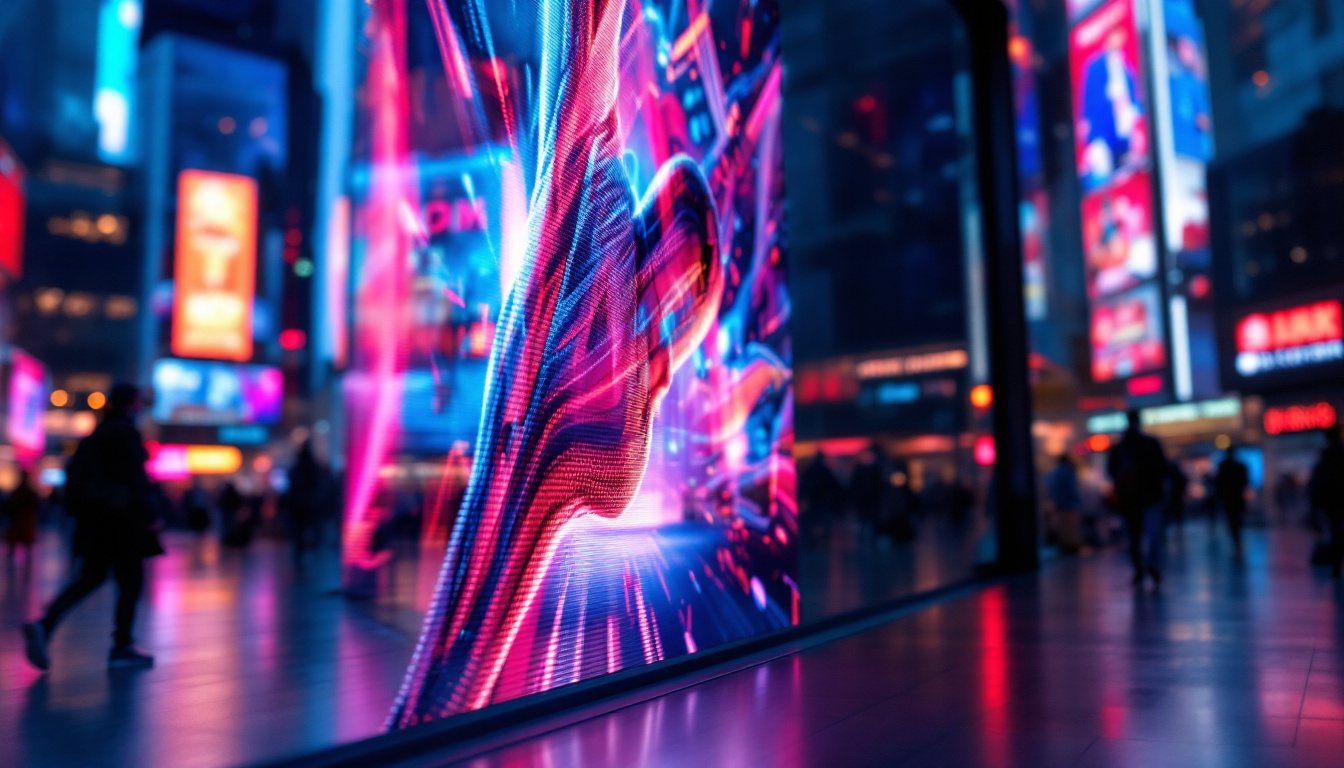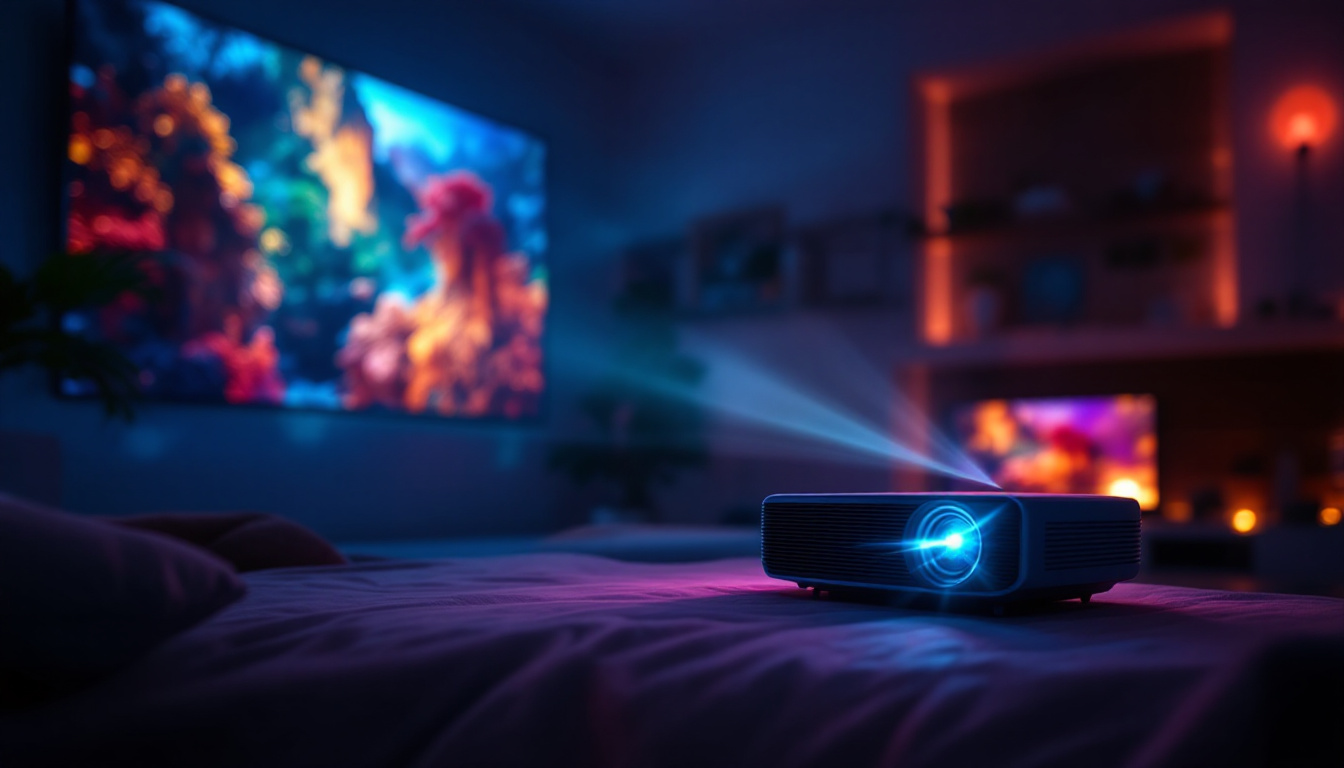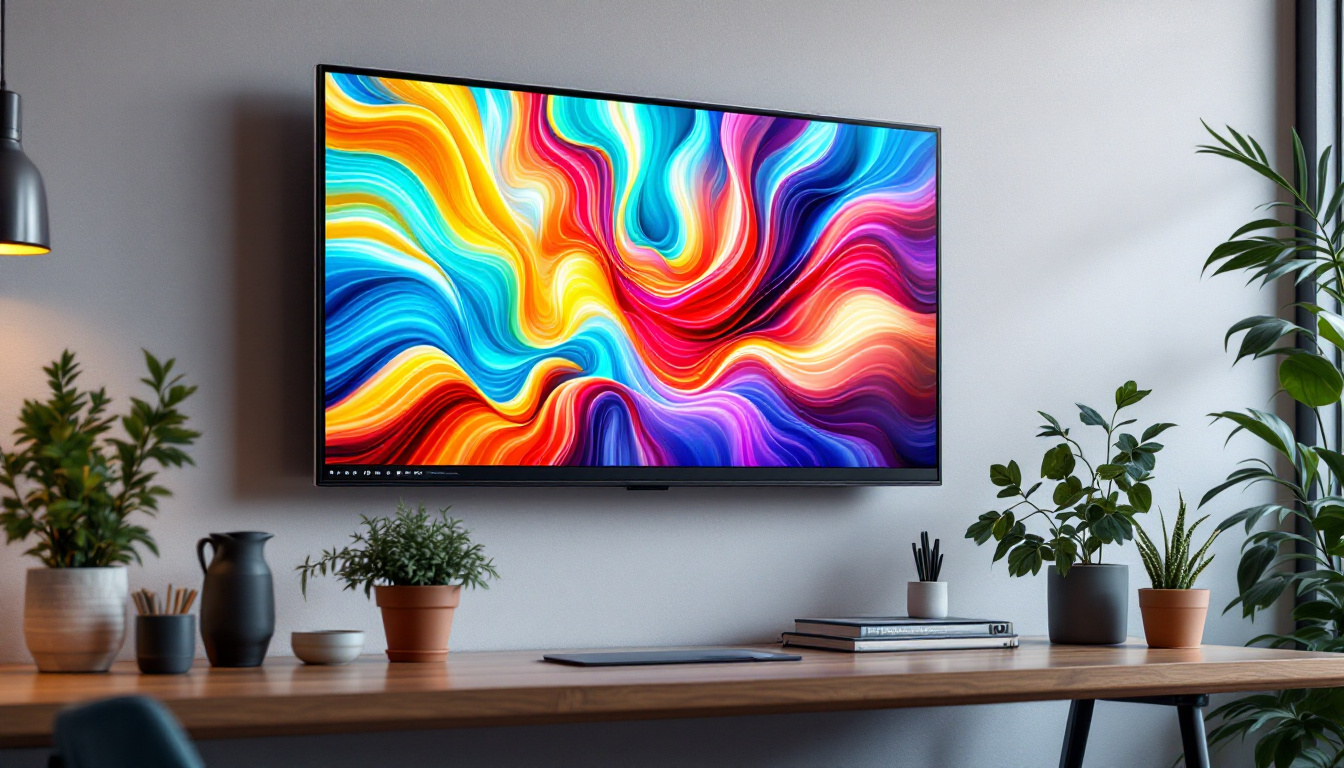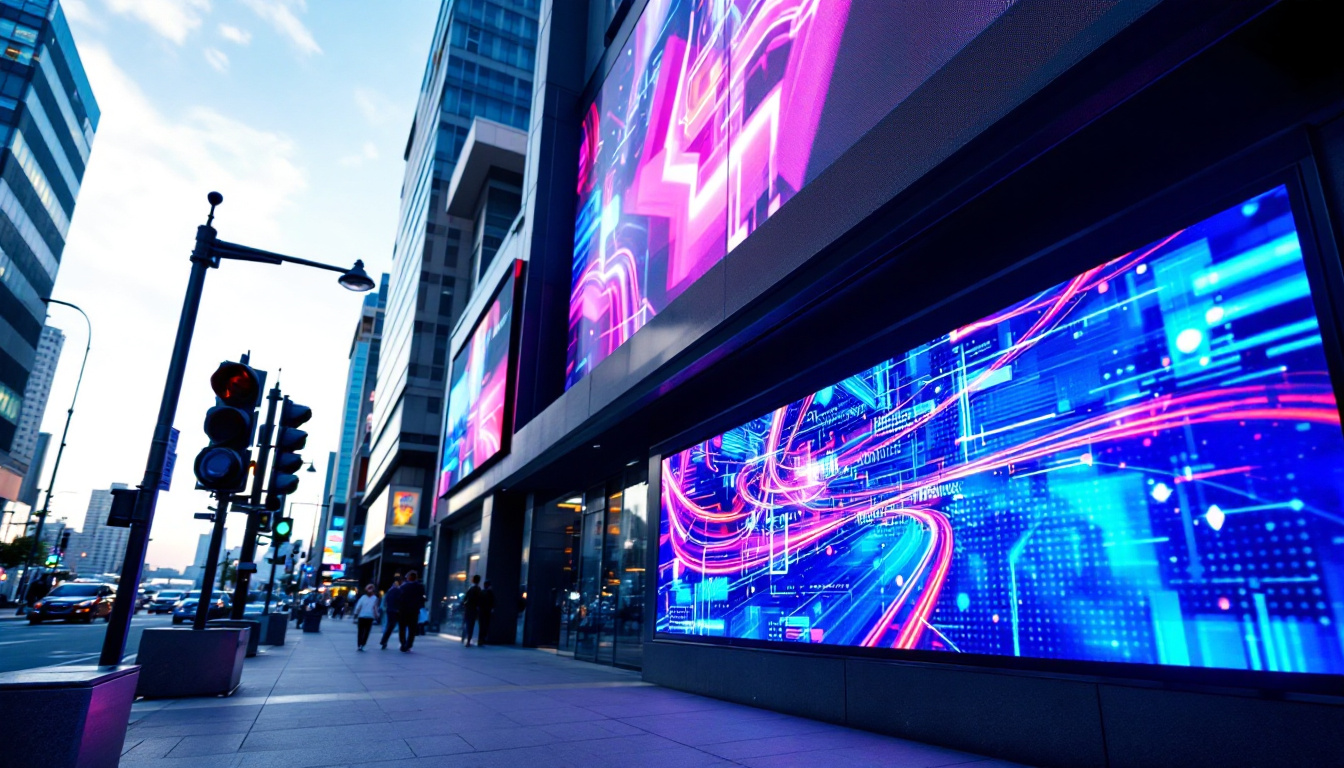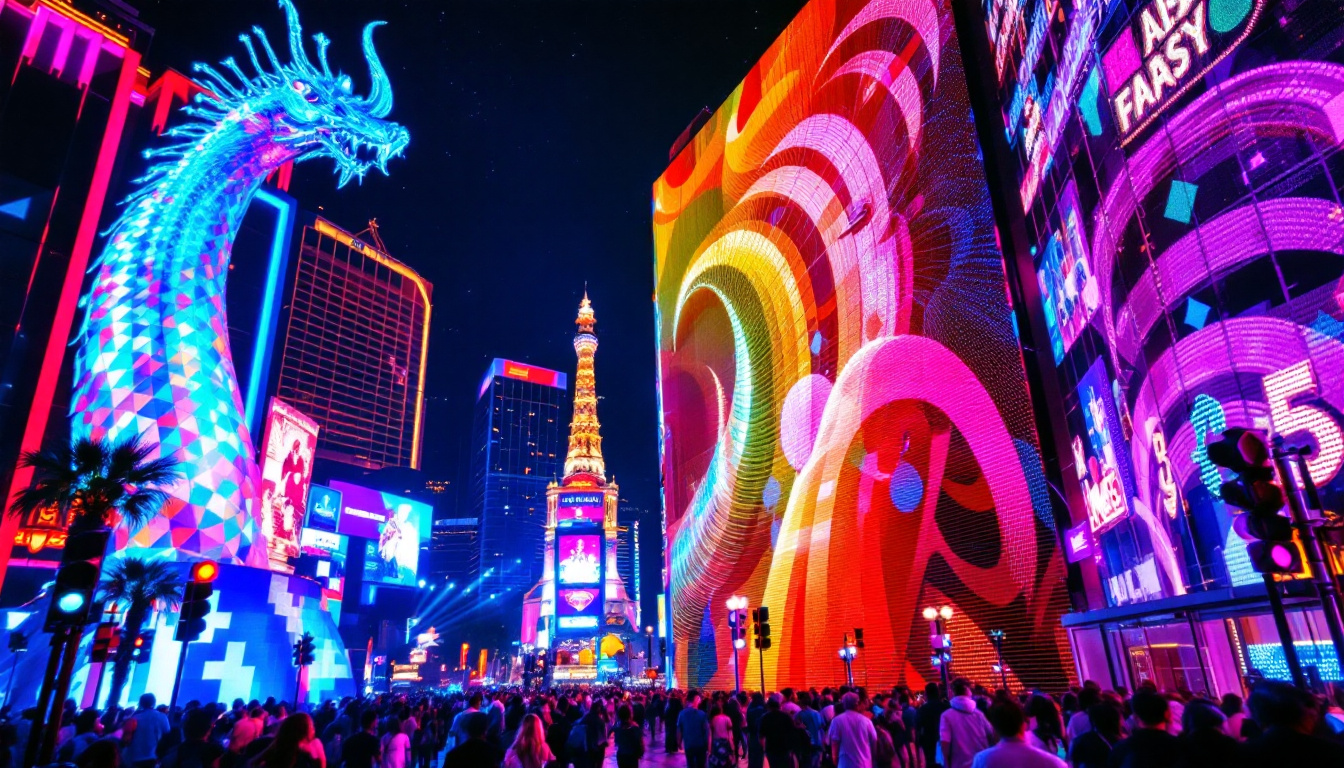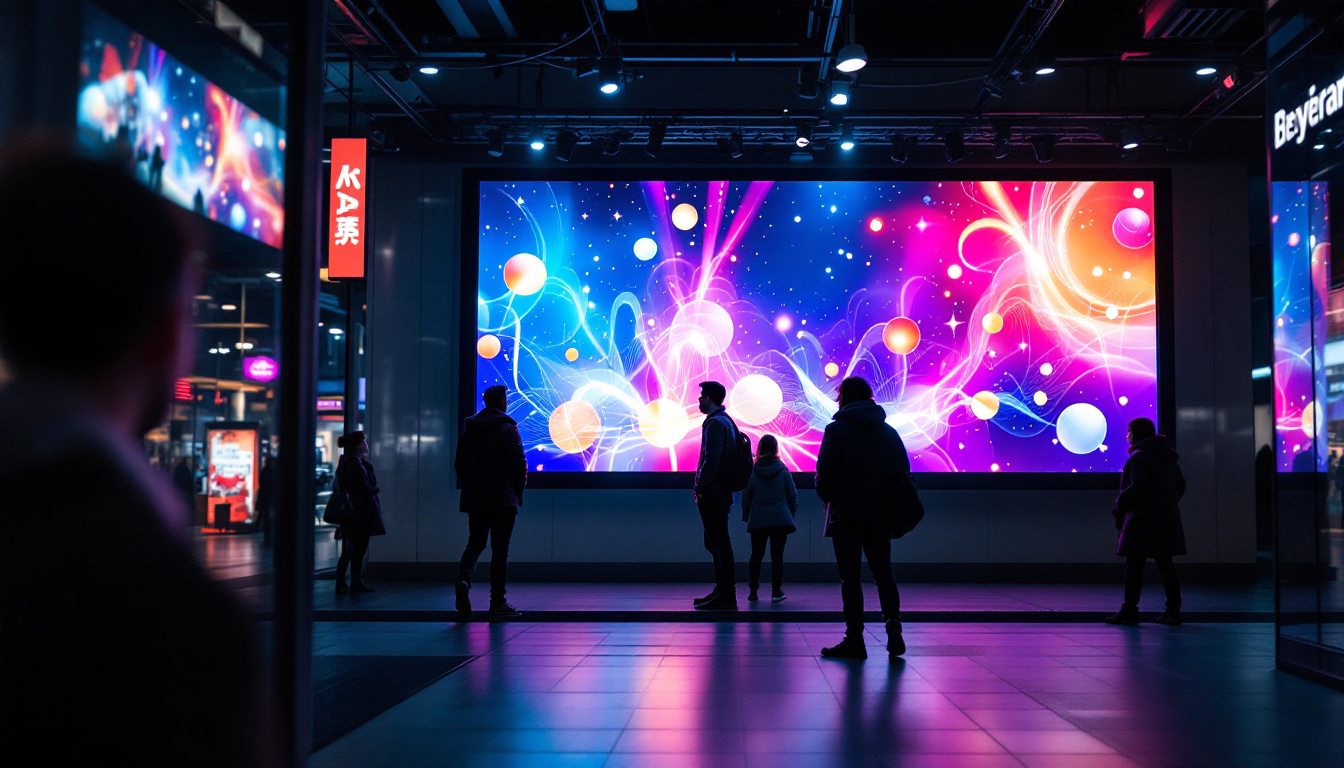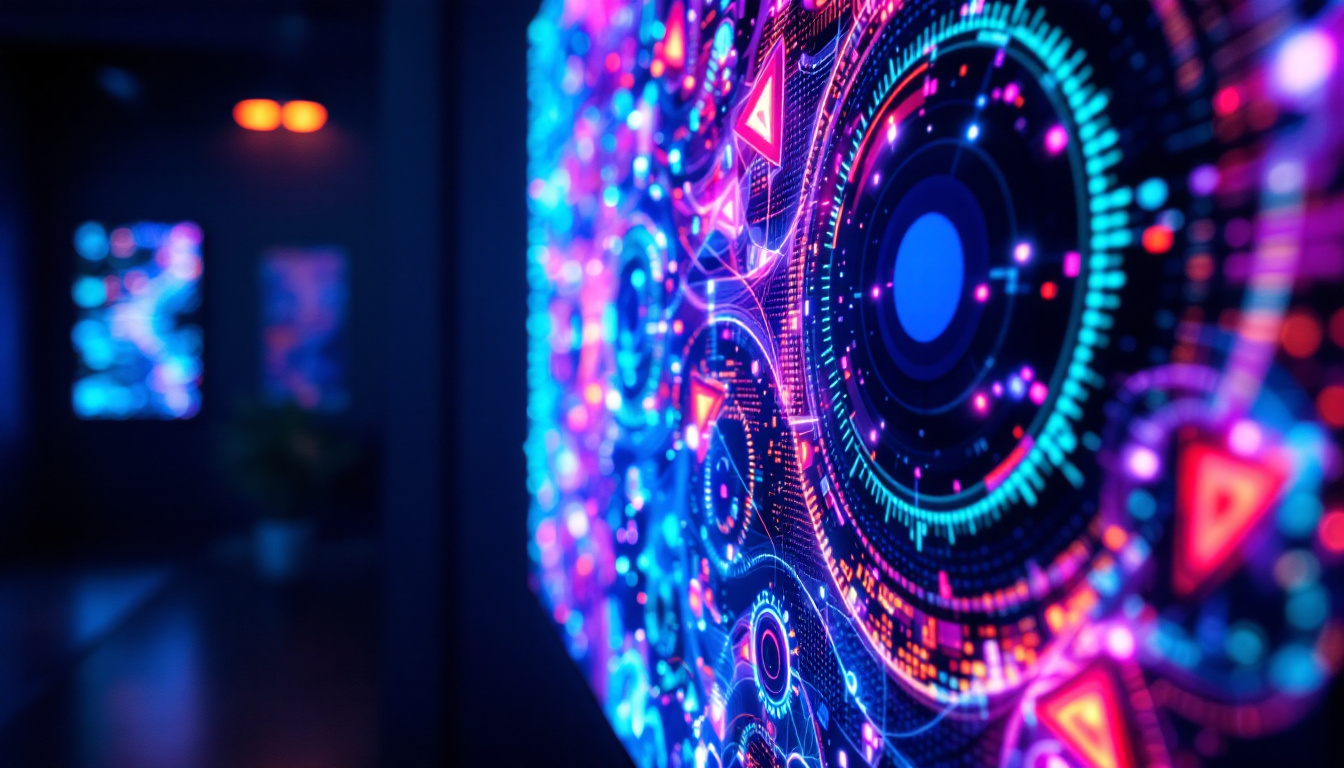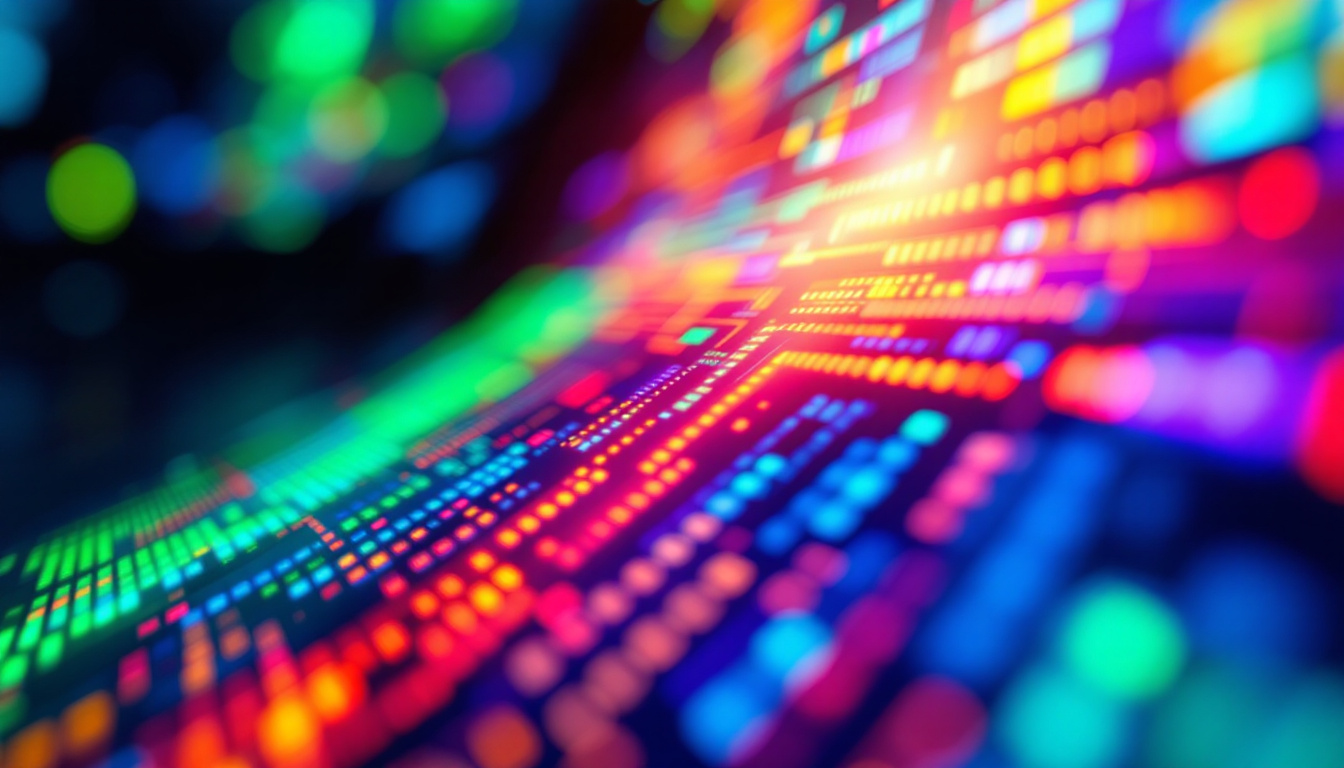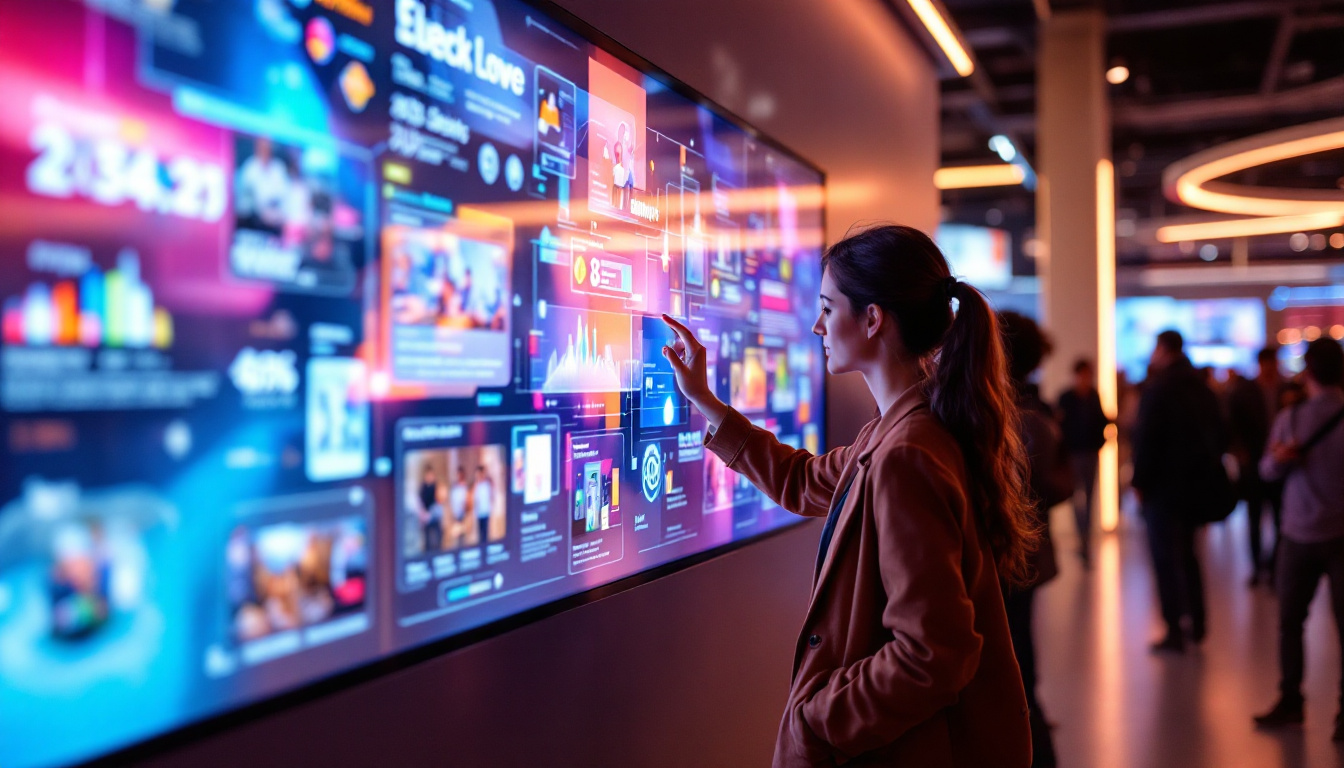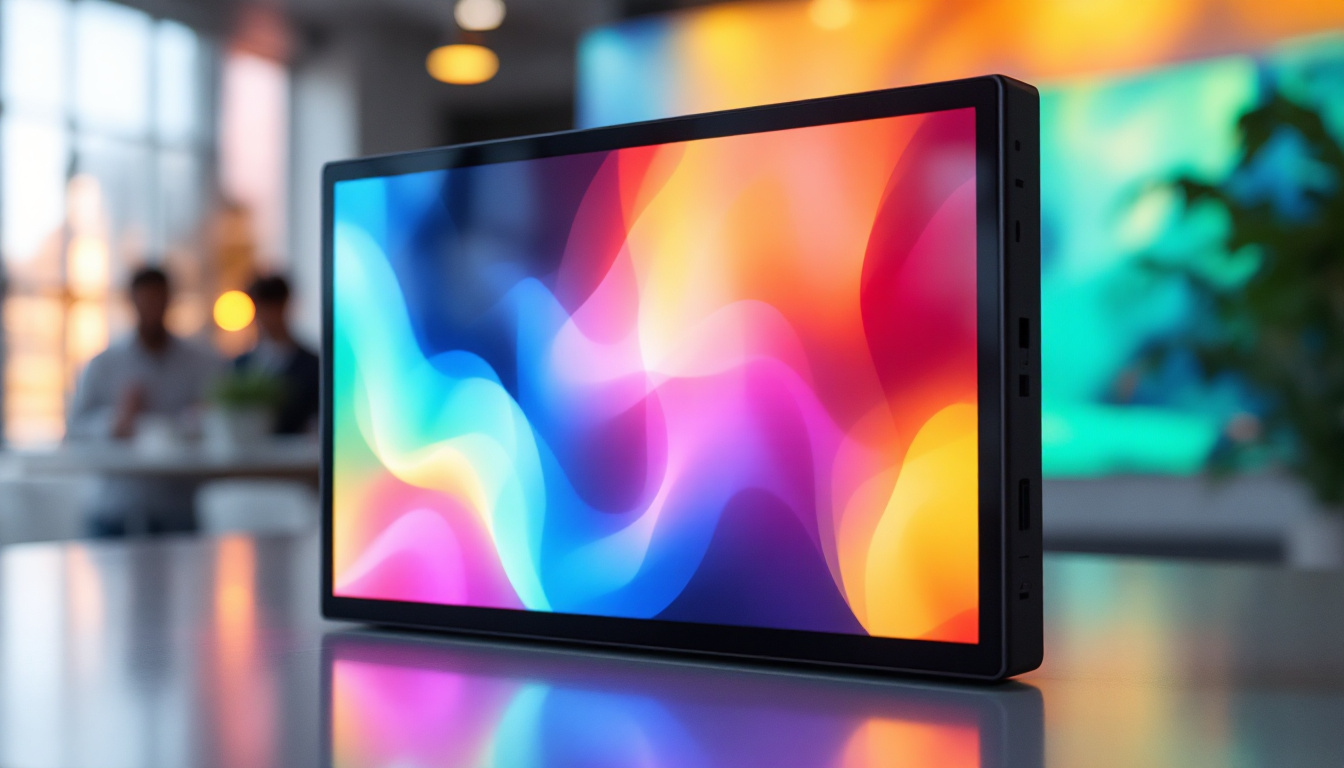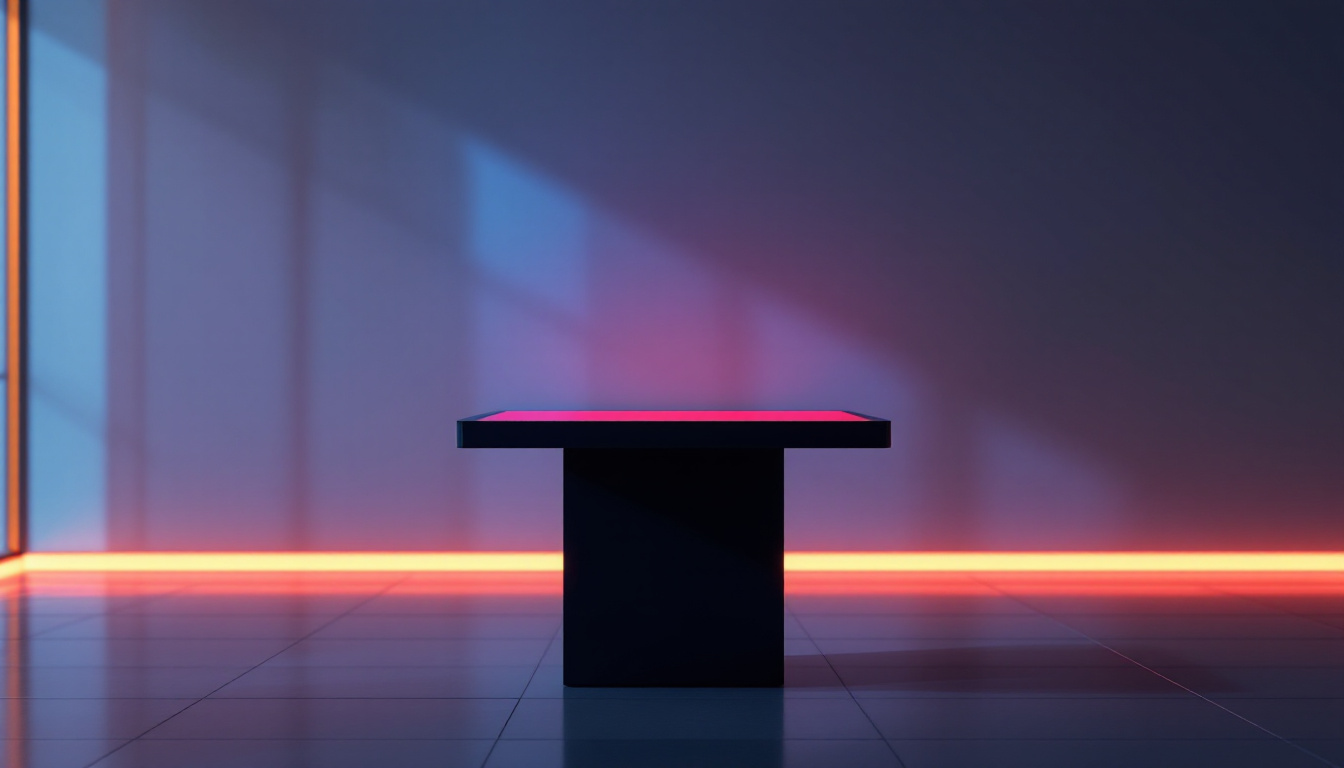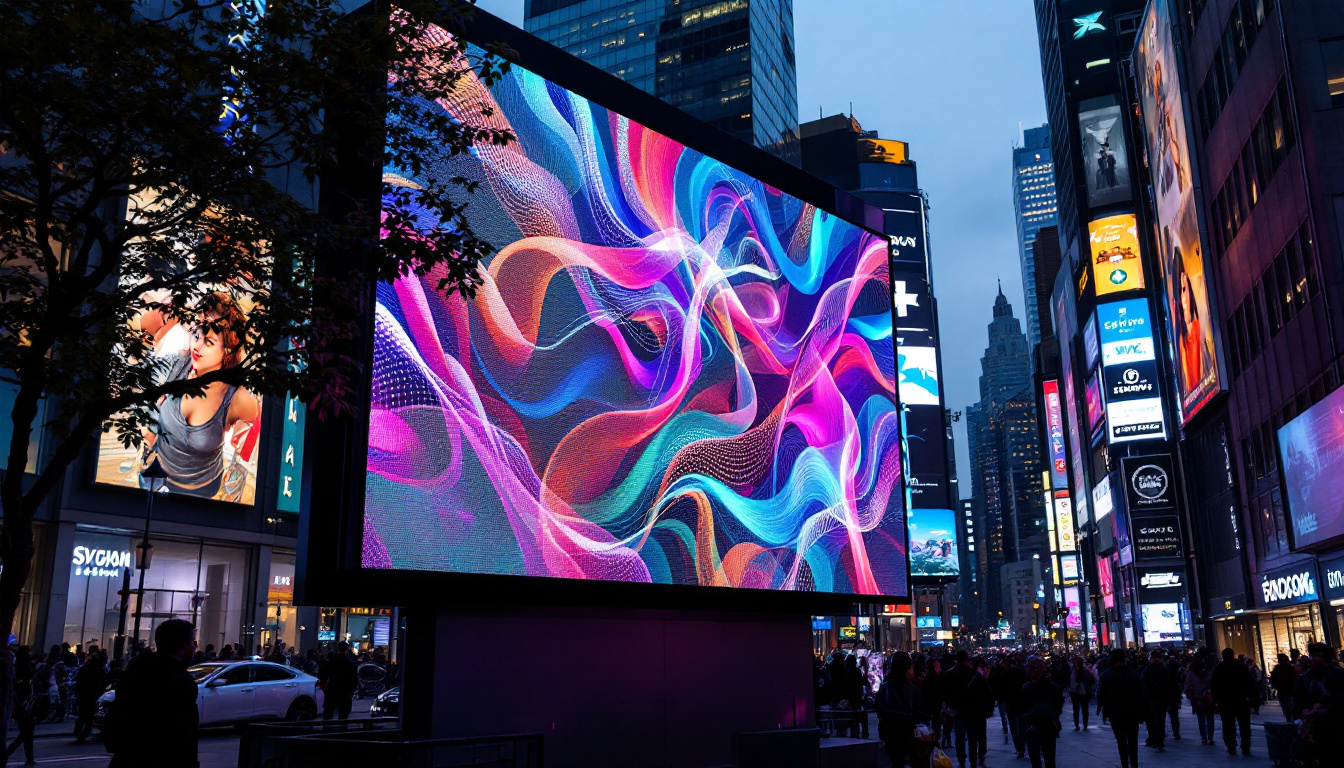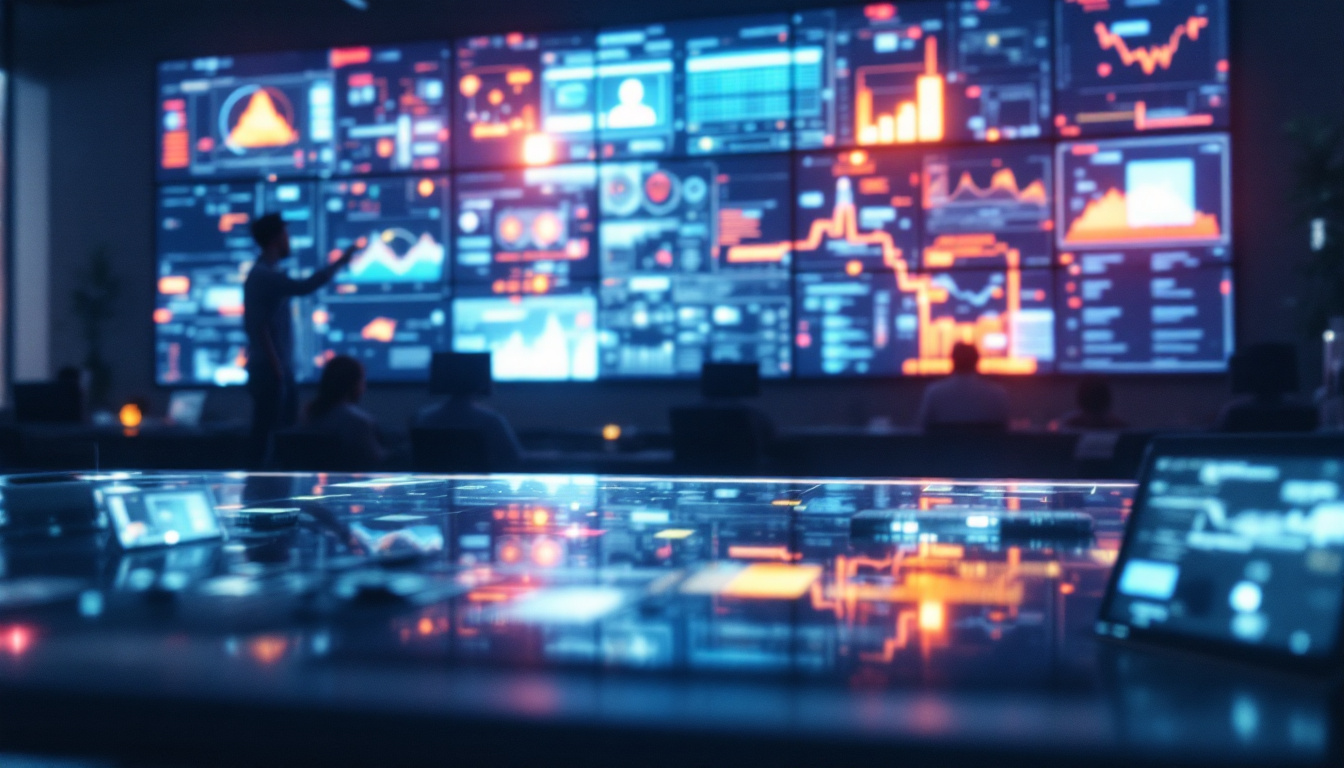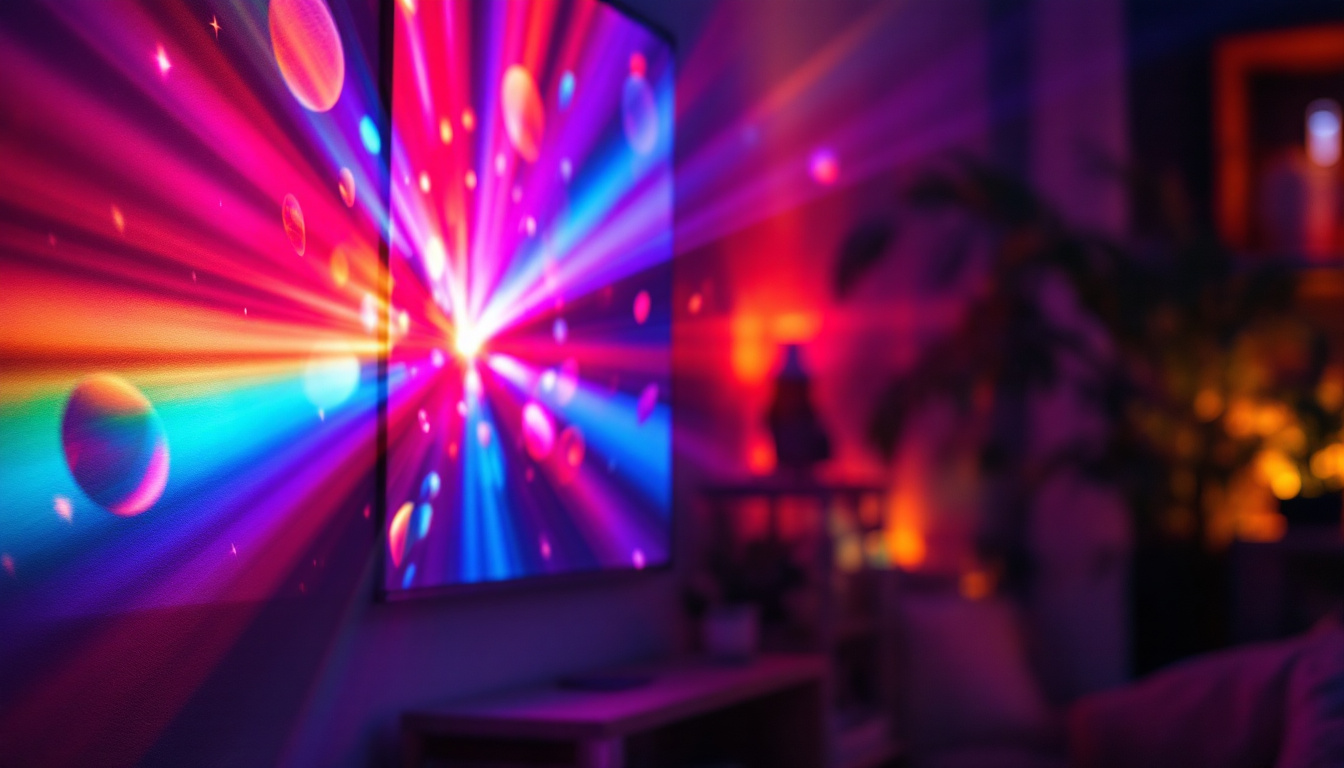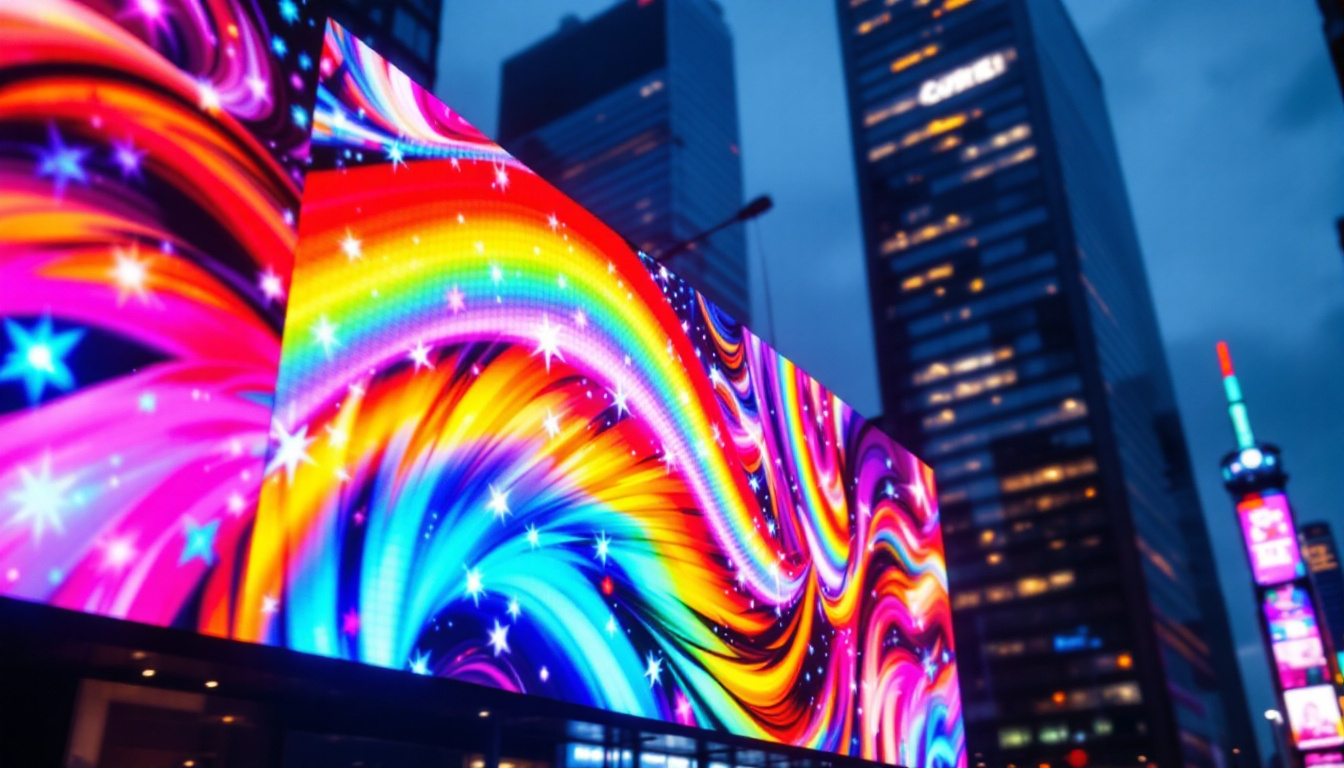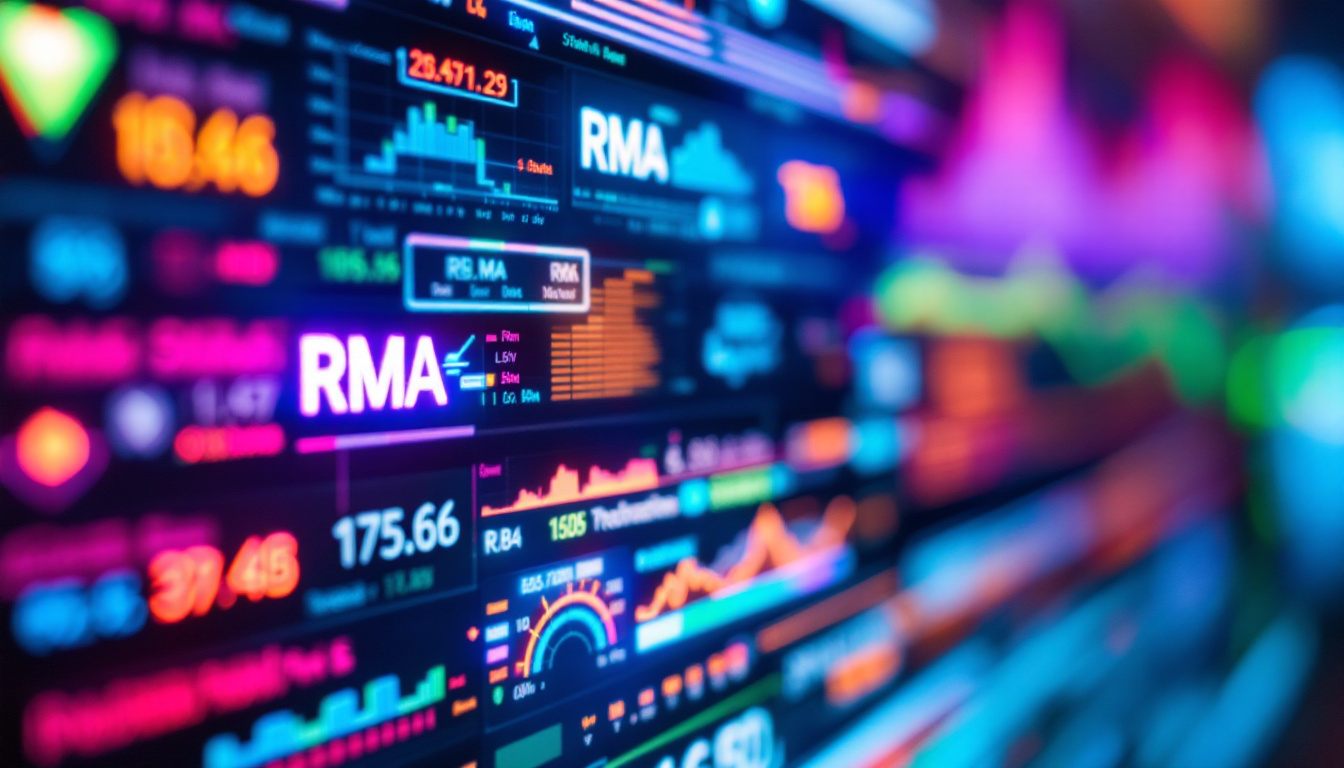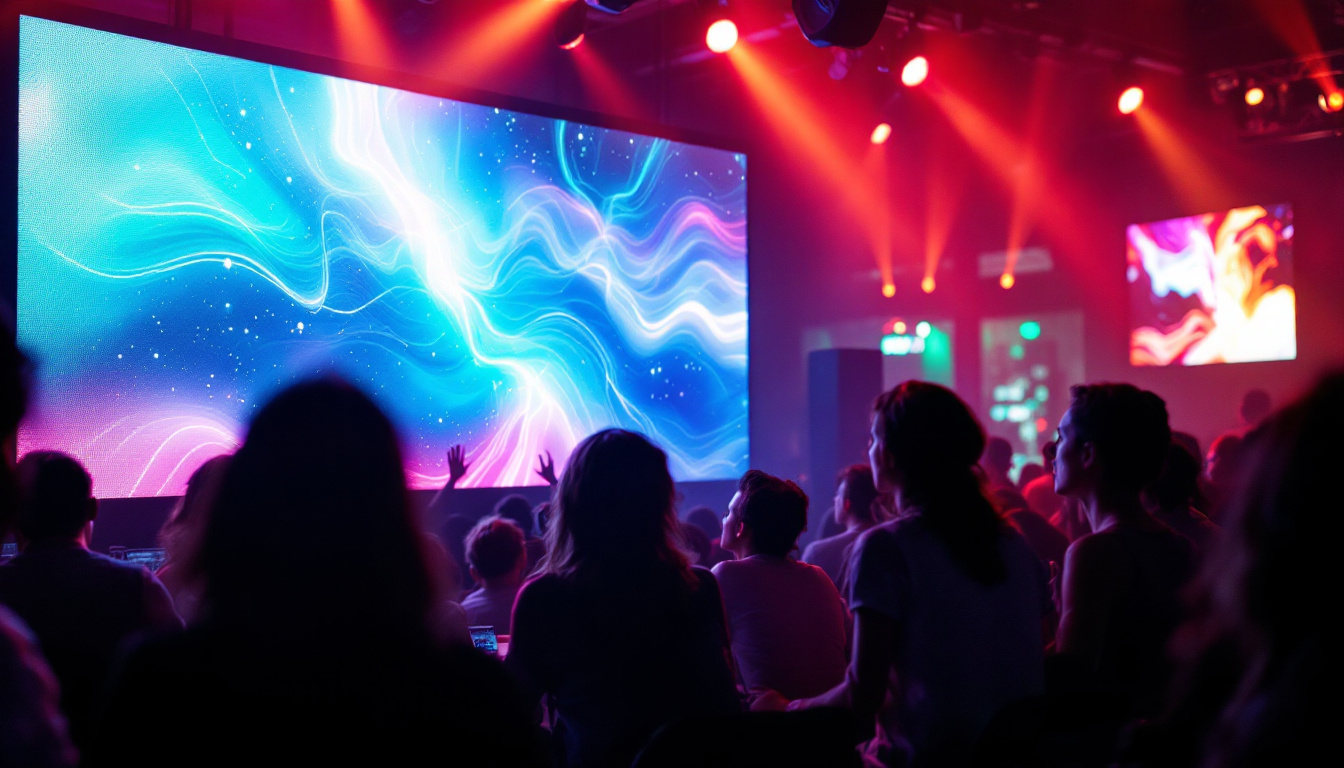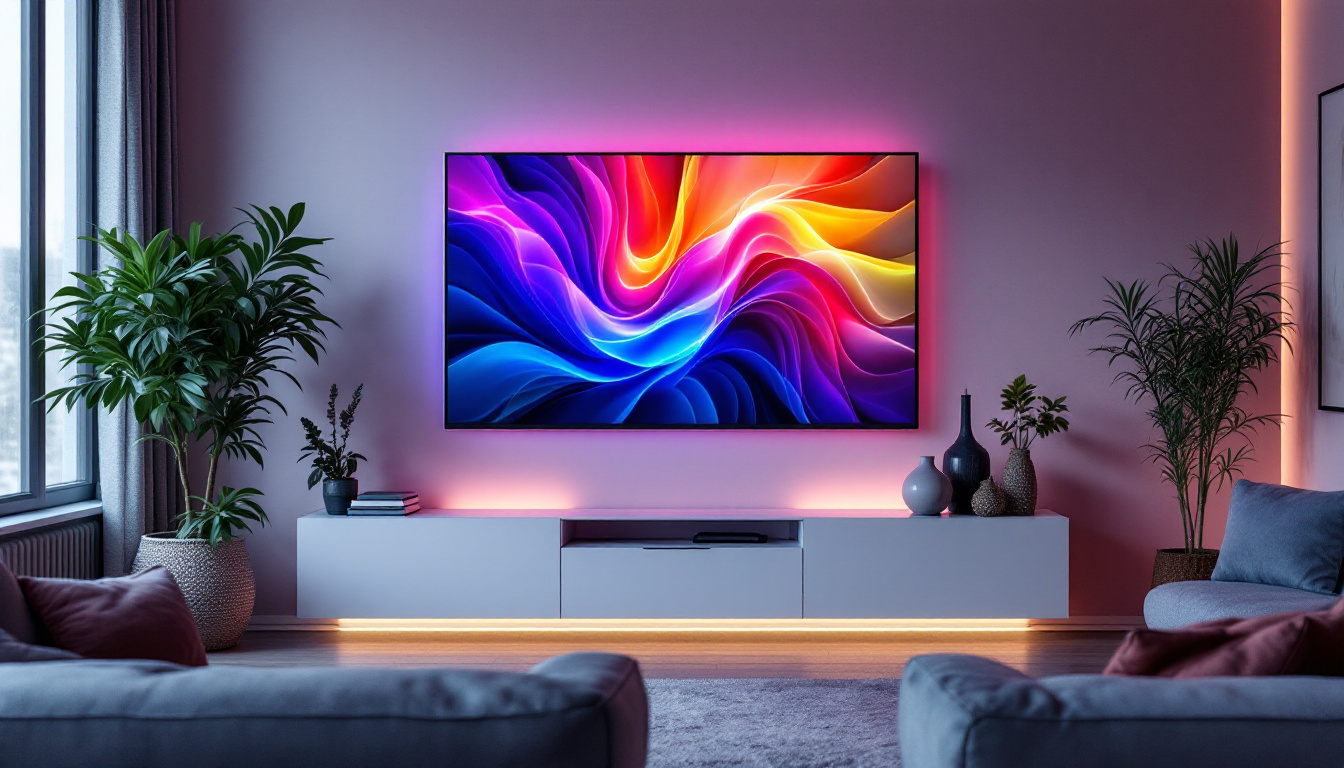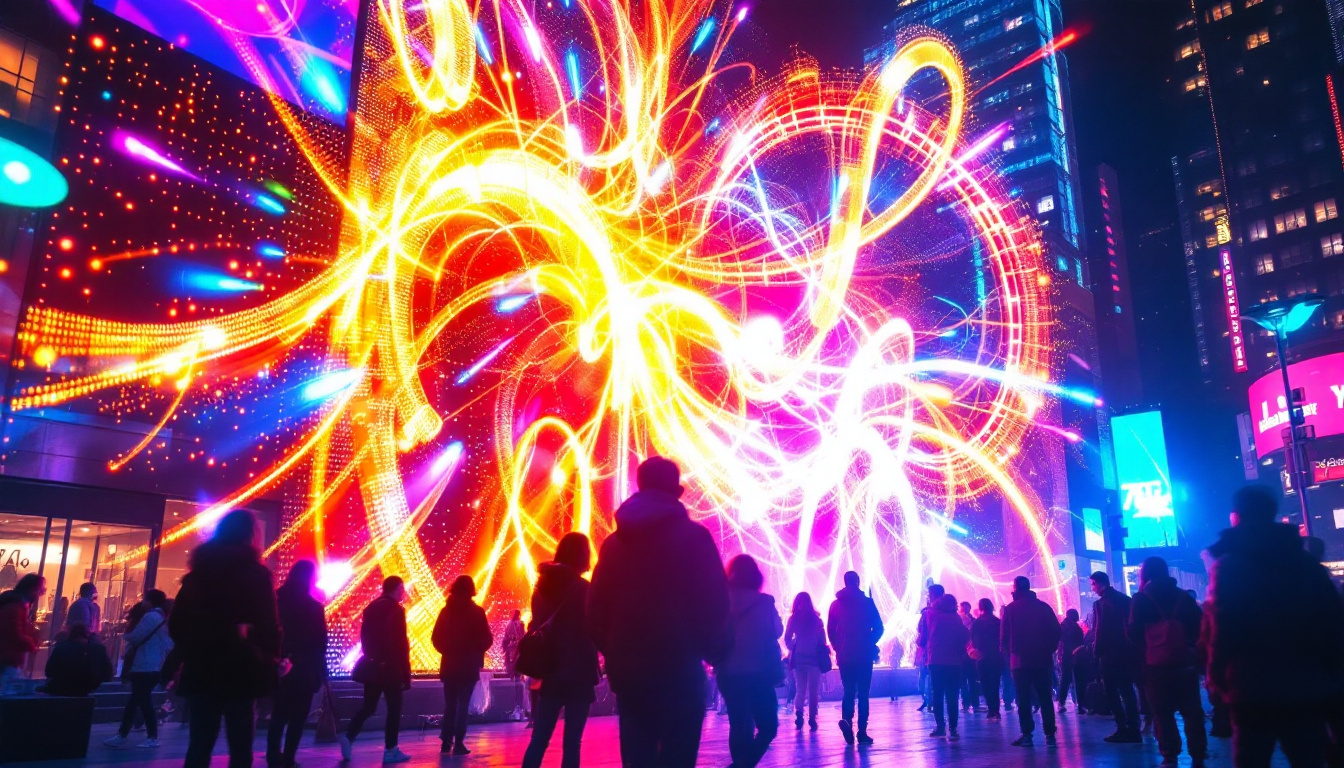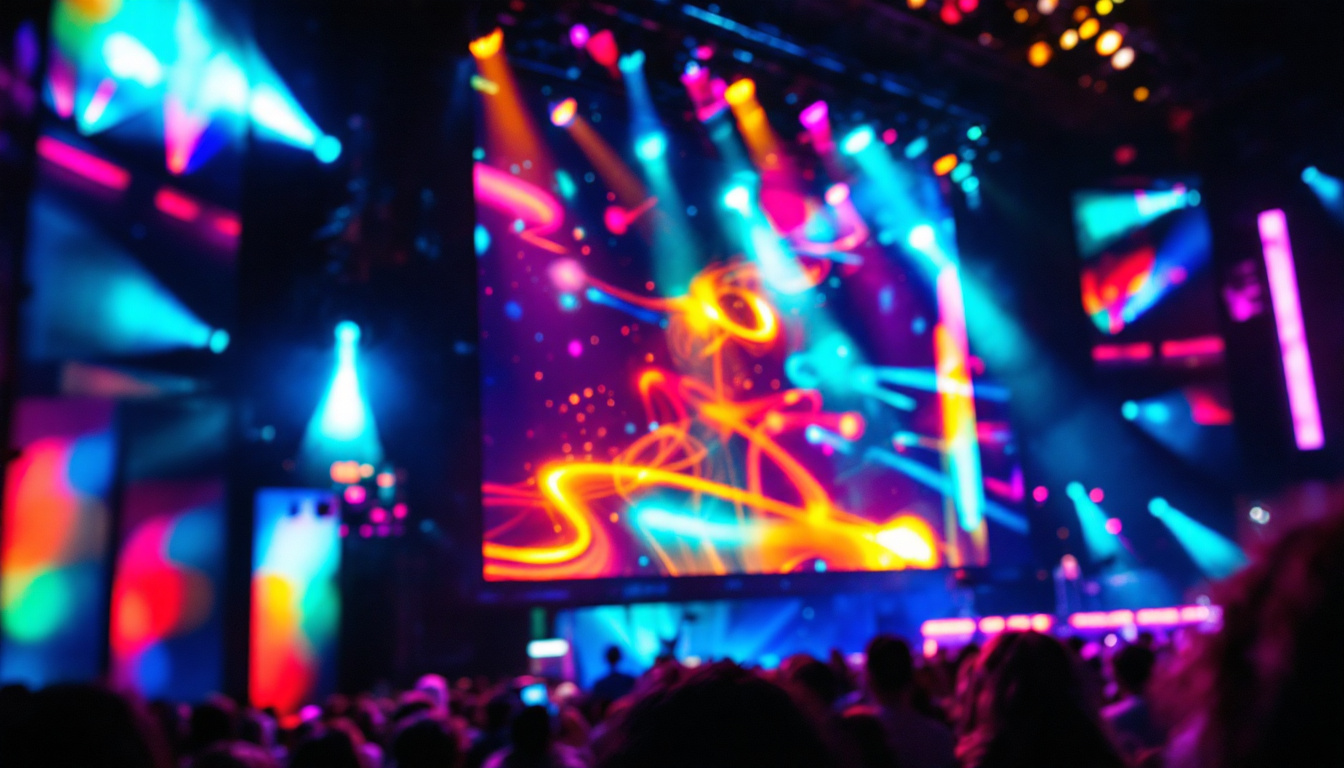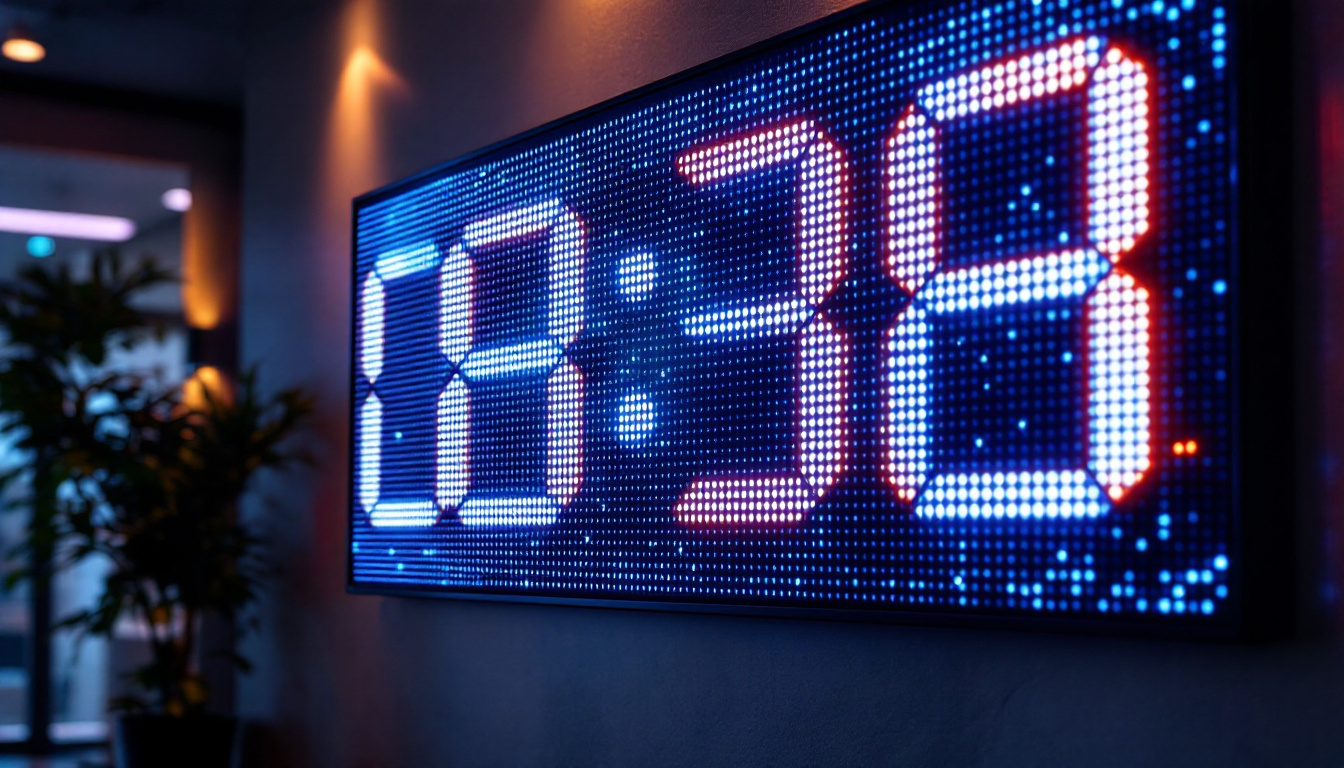In the realm of modern technology, LED displays have emerged as a cornerstone of visual communication. From billboards to televisions, the versatility and efficiency of LED (Light Emitting Diode) technology have transformed how information is presented and consumed. This article delves into the intricacies of LED displays, exploring their functionality, types, applications, and the future of this dynamic technology.
Understanding LED Technology
At its core, LED technology is based on the principle of electroluminescence, where a semiconductor emits light when an electric current passes through it. This simple yet effective mechanism has paved the way for a wide range of applications, particularly in display technology.
How LEDs Work
LEDs are composed of a chip made from a semiconductor material, typically gallium arsenide or gallium phosphide. When electricity flows through the chip, electrons recombine with holes, releasing energy in the form of photons, which is visible light. This process is highly efficient compared to traditional incandescent bulbs, resulting in lower energy consumption and longer lifespans.
Moreover, LEDs can produce a spectrum of colors by adjusting the materials used in the semiconductor. This capability allows for the creation of vibrant displays that can be tailored to specific needs, whether for advertising, entertainment, or information dissemination. The ability to manipulate light output also means that LEDs can be dimmed or brightened without losing efficiency, making them ideal for applications where lighting conditions vary, such as in automotive lighting or architectural illumination.
The Evolution of LED Displays
The journey of LED displays began in the 1960s with simple red LEDs used for indicators and small screens. Over the decades, advancements in technology led to the development of full-color displays, incorporating red, green, and blue (RGB) LEDs to create a wide array of colors.
Today, LED displays are ubiquitous, found in everything from smartphones to large outdoor screens. The evolution of this technology has been marked by significant milestones, including the introduction of organic LEDs (OLEDs) and quantum dot displays, which further enhance color accuracy and energy efficiency. Furthermore, the rise of microLED technology is poised to revolutionize the display market once again, offering even greater resolution and brightness while maintaining the energy efficiency that LEDs are known for. These innovations not only improve visual experiences in consumer electronics but also open up new possibilities in fields such as virtual reality and augmented reality, where high-quality displays are crucial for immersive experiences.
Types of LED Displays
LED displays can be categorized into several types based on their construction and application. Understanding these types is essential for selecting the right display for specific needs.
Direct View LED Displays
Direct view LED displays consist of individual LED modules that are directly visible to the viewer. These displays are commonly used in outdoor advertising, sports arenas, and large-scale events. Their brightness and clarity make them ideal for environments with high ambient light.
One of the key advantages of direct view LED displays is their ability to be configured in various shapes and sizes, allowing for creative installations that can capture audience attention effectively. The modular design also facilitates easy maintenance and upgrades. Furthermore, these displays often come with advanced features such as high refresh rates and wide viewing angles, ensuring that the content remains clear and engaging from different perspectives. This versatility makes them a favorite choice for dynamic content, such as live video feeds and interactive advertisements.
LED Backlit Displays
LED backlit displays utilize LEDs to illuminate a liquid crystal display (LCD) panel from behind. This technology is prevalent in televisions and computer monitors, providing improved brightness and contrast compared to traditional CCFL (cold cathode fluorescent lamp) backlighting.
Backlit displays offer a thinner profile and enhanced energy efficiency, making them a popular choice for consumer electronics. They also support a wider color gamut, contributing to a more immersive viewing experience. Additionally, advancements in local dimming technology have allowed for even better contrast ratios, as specific areas of the screen can be dimmed or brightened independently, resulting in more lifelike images. This feature is particularly beneficial for watching movies or playing video games, where detail in dark scenes is crucial for an optimal experience.
Organic LED (OLED) Displays
Organic LED displays represent a significant advancement in display technology. Unlike traditional LEDs, OLEDs use organic compounds that emit light when an electric current is applied. This allows for thinner, more flexible displays with superior color accuracy and contrast ratios.
OLED technology is widely used in high-end televisions and smartphones, offering deeper blacks and vibrant colors. Additionally, since OLEDs do not require a backlight, they can achieve true black levels, enhancing the overall visual experience. The flexibility of OLED technology also opens up exciting possibilities for innovative designs, such as curved or foldable screens, which can adapt to various user preferences and environments. Moreover, with the rise of OLED in the market, manufacturers are continually striving to improve the longevity and durability of these displays, addressing concerns about burn-in and color fading, ensuring that consumers can enjoy the stunning visuals for years to come.
Applications of LED Displays
The versatility of LED displays has led to their adoption across various industries. From advertising to healthcare, the applications are vast and varied.
Advertising and Marketing
LED displays have revolutionized advertising by providing dynamic and eye-catching content. Digital billboards and signage can be updated in real-time, allowing businesses to promote time-sensitive offers or events efficiently.
Moreover, the ability to display high-resolution images and videos enhances brand visibility and engagement. Advertisers can create compelling narratives that resonate with their target audience, driving higher conversion rates.
Entertainment and Media
In the entertainment industry, LED displays are integral to concerts, theaters, and sporting events. Large LED screens provide audiences with clear visuals, ensuring that everyone can enjoy the performance, regardless of their seating position.
Additionally, LED technology is used in film production for lighting and special effects, allowing for greater creativity and flexibility during shoots. The immersive experience created by LED displays enhances storytelling and captivates viewers.
Healthcare and Education
In healthcare, LED displays are utilized for patient information systems, wayfinding signs, and educational purposes. Their clarity and brightness ensure that critical information is easily visible, contributing to improved patient care and operational efficiency.
In educational settings, LED displays facilitate interactive learning experiences. They can be used for presentations, digital signage, and collaborative projects, enhancing engagement and knowledge retention among students.
Advantages of LED Displays
The benefits of LED displays extend beyond their visual appeal. Several key advantages make them a preferred choice for various applications.
Energy Efficiency
One of the most significant advantages of LED displays is their energy efficiency. Compared to traditional display technologies, LEDs consume significantly less power, resulting in lower operational costs. This efficiency is particularly beneficial for large-scale installations that operate continuously.
Furthermore, the longevity of LED displays—often exceeding 50,000 hours—reduces the need for frequent replacements, contributing to sustainability and cost savings over time.
High Brightness and Visibility
LED displays are known for their exceptional brightness, making them suitable for both indoor and outdoor environments. The high visibility ensures that content remains clear and legible, even in direct sunlight or brightly lit spaces.
This characteristic is especially crucial for advertising and public information displays, where capturing attention is paramount. The ability to adjust brightness levels also allows for optimal viewing experiences in various lighting conditions.
Versatility and Customization
The modular nature of LED displays enables a high degree of customization. They can be configured in various shapes, sizes, and resolutions to meet specific requirements. This versatility allows for creative installations that can enhance brand identity and user engagement.
Additionally, LED displays can be easily integrated with other technologies, such as sensors and interactive systems, further expanding their functionality and applications.
Challenges and Considerations
Despite their numerous advantages, LED displays are not without challenges. Understanding these limitations is essential for making informed decisions regarding their use.
Initial Costs
The initial investment for LED displays can be higher compared to traditional display technologies. While the long-term savings on energy and maintenance can offset this cost, businesses must consider their budget and return on investment (ROI) when making a purchase.
It is crucial to conduct a thorough cost-benefit analysis to determine the feasibility of LED displays for specific applications. Factors such as usage frequency, location, and content type should be taken into account.
Potential for Image Burn-In
In certain applications, particularly with OLED displays, there is a risk of image burn-in, where static images can leave a permanent mark on the screen. This phenomenon occurs when certain pixels are used more frequently than others, leading to uneven wear.
To mitigate this issue, it is essential to implement strategies such as varying content and utilizing screen savers. Understanding the limitations of the specific display technology can help users avoid potential pitfalls.
The Future of LED Displays
The future of LED displays looks promising, with ongoing advancements in technology and applications. Several trends are shaping the landscape of this dynamic field.
MicroLED Technology
MicroLED technology is poised to revolutionize the display industry. This innovation involves tiny, self-emissive LEDs that can be used to create high-resolution displays with exceptional color accuracy and brightness. MicroLEDs offer the benefits of OLEDs without the risk of burn-in, making them an attractive option for various applications.
As manufacturing processes improve and costs decrease, microLED displays are expected to become more accessible, paving the way for new possibilities in consumer electronics and large-scale installations.
Integration with Augmented and Virtual Reality
The integration of LED displays with augmented reality (AR) and virtual reality (VR) technologies is another exciting trend. LED screens can enhance AR experiences by providing vibrant backgrounds and interactive elements, while VR applications can benefit from high-resolution displays that immerse users in virtual environments.
This convergence of technologies is likely to create new opportunities in entertainment, education, and training, offering users unique and engaging experiences.
Conclusion
LED displays have transformed the way information is conveyed and consumed, offering a blend of efficiency, versatility, and visual appeal. As technology continues to evolve, the applications and capabilities of LED displays are expected to expand even further.
Understanding the intricacies of LED technology, its various types, and potential applications is essential for harnessing its full potential. By staying informed about advancements and trends, businesses and consumers alike can make strategic decisions that leverage the power of LED displays to enhance communication and engagement.
Discover the Future of Visual Communication with LumenMatrix
As you explore the vast potential of LED displays, consider the innovative solutions offered by LumenMatrix. As a leader in LED display technology, LumenMatrix is committed to enhancing your brand’s visibility and creating immersive visual experiences with a diverse range of products, including Indoor and Outdoor LED Wall Displays, Vehicle LED Displays, LED Poster Displays, and more. Embrace the future of visual storytelling and check out LumenMatrix LED Display Solutions to captivate your audience and communicate your message with unparalleled clarity and impact.

